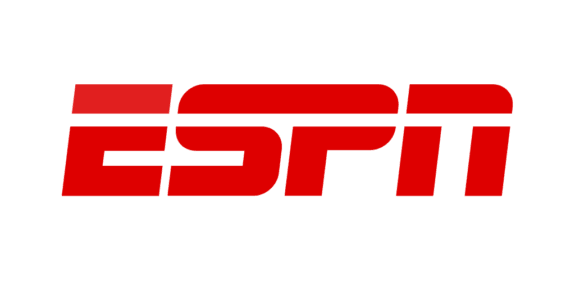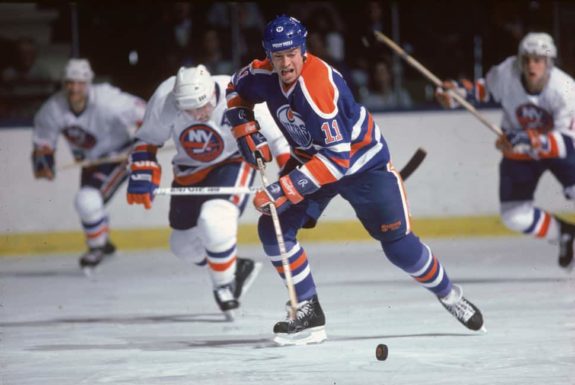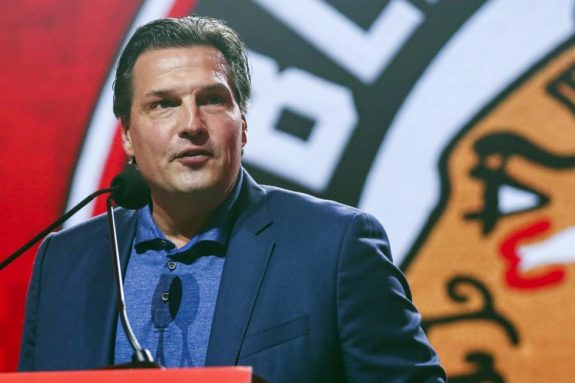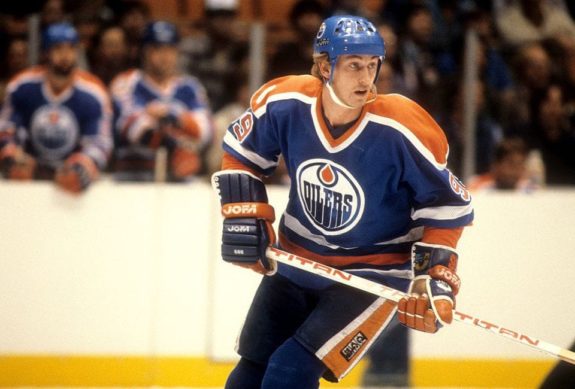For the first time in 17 seasons, the NHL wasn’t broadcast on NBC, but instead moved to ESPN and TNT this past season as part of a seven-year deal with the two networks. The move had massive implications for the league as the new networks generated more revenue and broaden the fanbase for the game, but also provided two networks for the national audience.

One year into the deal, it’s clear that the ESPN and TNT broadcasts are both unique and unlike the NBC coverage. The two new networks also more importantly displayed a handful of positives and negatives as well as different elements to hockey coverage that will likely remain for future seasons.
Related: Edmonton Oilers’ Michaels & Moon Give Team Top-Notch Broadcast Duo
There are plenty of takeaways from one season of both the NHL on ESPN and TNT. While overall both were successful and attributed to a boost in television ratings in the playoffs, some attributes could be improved or revisited by the producers of the broadcasts.
ESPN
ESPN entered the new era as the premier American hockey coverage platform. In some ways, that’s what fans saw this season, with ESPN providing half of the Stanley Cup Playoff games and the Stanley Cup Final on ABC. The worldwide leader in sports looked to be the predominant destination for hockey while the other networks, particularly TNT, would be secondary to them.
What ESPN Got Right
The first thing that stood out in their coverage was the production. ESPN provided better camera angles, graphics, and visuals as well as a cleaner and more professional look to the games. While some of the camera angles were often criticized, especially the ones from behind the goal when one team was in the offensive zone, the broadcasts were able to give the fans the right shot of the play at the right times.
Likewise, the in-game announcers for both play-by-play and color commentary had mixed reactions, but overall stood out and were at a high level. Bob Wischusen, who previously worked college football and basketball for ESPN along with play-by-play for the New York Jets had no problem easing into play-by-play for the NHL. This season, Wischusen emerged as one of the best broadcasters for the network, and hockey fans saw firsthand how he could call the fast-paced game of hockey. Similarly, the network also saw Steve Levy and Emily Kaplan emerge as superb commentators in both the booth and the studio. Kaplan notably also covered games from behind the glass while also being an analyst for the NHL show, The Point, making her not only a pivotal part of the network’s coverage but a prominent one moving forward.
Ultimately, ESPN didn’t have a shortage of personalities and experts that helped with the coverage in its first year. Granted, with the strong personalities came positives and negatives with some fans loving the John Buccigross association with chicken parm while others hated it. However, the personalities carried the coverage and broadened the audience for the NHL. Kevin Weekes, who already plays a big role with NHL Network, became a phenom with ESPN with his trade deadline and breaking news coverage.
There wasn’t a shortage of good coverage or talent for the NHL on ESPN. This arguably led to why their coverage was frustrating, especially for passionate hockey fans.
Where ESPN Needs to Improve
For starters, the number of games on ESPN was underwhelming, to say the least. The network broadcast a handful of games in the first few weeks of the season, but afterward failed to show games until midway through the season on ESPN or ESPN2 (their secondary network). In their inaugural season, they only showed 18 regular-season games whereas the NBA received 101 games despite both leagues playing 82-game seasons. To be fair, the leader in sports coverage had a lot of events to cover including Monday Night Football, the NBA, and college sports, leaving little room for the NHL.
However, while TNT provided one night a week, with Wednesday being their night for hockey coverage, ESPN failed to provide a similar option. The minimal coverage reflected for fans how the network feels about the NHL — that it is a secondary league and can be treated as such. The network stepped up in the Stanley Cup Playoffs, but for passionate followers of the game, they felt late to the party. Unlike their counterparts, who had a full season to work on their coverage and allow the national audience to follow them, ESPN became a regular for coverage in playoffs, particularly in the Eastern Conference Final.
Aside from the lack of coverage, the lead studio team failed to form the chemistry and provide the level of analysis that many were hoping for. Mark Messier and Chris Chelios are two of the greatest players in NHL history, but together the two appeared more as name hires rather than for their coverage. To quote Connor Smith, who covers the Chicago Blackhawks at The Hockey Writers, “I get them (ESPN) wanting to have both for name recognition/value, but I just didn’t feel like they meshed effectively together. I’d love to see Kevin Weekes or Brian Boucher in one of those spots next year,” which largely reflects the trial and error of the first-year broadcast in general.

Considering it was the first year of their coverage, there understandably were going to be some mishaps, struggles, and adjustments along the way. ESPN wanted to try out different things and provide fans with a unique viewing experience that wasn’t previously available and isn’t provided by local networks. Among the many errors, a prominent one was ESPN asking their ice-level reporters, like Kaplan, Leah Hextall, and Caley Chelios to interview the head coaches during the game, sometimes within periods of play. With the head coaches dialed into the game and how their teams were doing on the ice, they weren’t focused on the interviews and oftentimes gave the impression that they’d rather do anything but an interview.
The NHL on ESPN provides a lot of optimism for the league and even those that criticize the coverage. However, one year in, there’s a lot of room for improvement. The league is anticipating growth with the network and the hope is that they only continue to enhance their coverage for both the casual and expert fans alike.
TNT
TNT entered the new era as the secondary network for NHL broadcasts. Like the NBA, the league split games between the two channels throughout the season. However, with TNT becoming a regular on Wednesday nights, fans slowly favored the network and particularly became fond of their unique hockey coverage, especially as the season progressed.
What TNT Got Right
What separated TNT from both ESPN and other networks was their commentary, both in the studio and in the booth. A lot of the talented members of the NHL on NBC team moved over to the new network and the high level of production showed.
For the game coverage, Kenny Albert was as good as it gets and established himself as the lead play-by-play commentator. Albert has become one of the prominent hockey voices for the national audience since Mike “Doc” Emrick retired in 2020 after covering the game for 47 years. It might take a while to reach the same status as Emrick but the 54-year-old play-by-play announcer is on track to become one of the greats. Additionally, Eddie Olczyk, who also broadcast games for NBC before joining TNT, provided a similar strong analysis as the lead color commentator, giving the network a great duo for their coverage.

TNT also saw their secondary coverage shine with Brendan Burke finding strong chemistry with Darren Pang. Burke already covers the New York Islanders for MSG Network and the transition was seamless for the young, rising play-by-play analyst, ultimately providing TNT with two top-notch options.
The broadcasts for the games were great but what stood out for both the expert and the casual fans was the studio broadcast. McHugh steered the pregame, intermission, and postgame shows, and along with both former players and coaches that provided more than enough personality, made for an intriguing group to watch. The antics, humor, and overall strong comradery formed by Wayne Gretzky, Anson Carter, Rich Tocchet, and Paul Bissonnette along with McHugh made even unexciting games watchable and entertaining.

Moreover, the TNT studio coverage made Gretzky, a larger-than-life figure in the hockey world, relatable and often just part of the team, making the coverage as a whole stronger. The personable side of Gretzky separated him from the way other great athletes are often portrayed on broadcasts, which allowed fans to not only see a different side of him but also enjoy great shows before, during, and after games.
Where TNT Needs to Improve
The personalities at TNT also backfired at times with a lot of their analysts falling into biased coverage. For the majority of the season, it was their strength, with Gretzky telling stories about his years with the Edmonton Oilers or Bissonnette and Tocchet talking about some of their unique experiences in the NHL.
However, the bias within the analysts also led to them talking about some teams, especially the ones they played for, in a preferred manner. Ultimately, the members of the studio all had strong opinions about the game and were willing to share them, while it often fueled a strong broadcast, it also left it limited in many ways. Likewise, analysts made friendly bets between one another, which led to Bissonnette being forced to cut his hair live, as he picked the Calgary Flames to defeat the Oilers in the second round. While humorous, it spoke to the network’s coverage and their intended perception among fans, for better or worse.
In addition, the opinionated broadcast also kept TNT as a secondary one from a professional standpoint. For many hockey fans that watch Hockey Night in Canada on Sportsnet, they noticed a stark difference in the details and overall coverage. While Sportsnet has plenty of personalities, a lot of its coverage is both devoted to the NHL and news involving the game. TNT has a niche as a fun and enjoyable broadcast that will attract a lot of casual fans, but the passionate ones in the United State desire coverage that aligns more with the one provided in Canada.
Other Takeaways from the ESPN & TNT Broadcasts
ESPN broadcast their games in two forms and for the majority of the season, ESPN+ was the only way to watch their coverage. The streaming service provided a unique perspective and allowed fans to watch out-of-market games, but the network also had its negatives. Many games were exclusively on ESPN+ and as a result, a lot of local fans were blacked out of games and without the service couldn’t watch their teams.
While TNT was known as the fun and entertaining network for hockey, they also knew when to be serious when covering important, consequential topics. This past season in particular had a lot of unfortunate events and the studio managed to not only stay on course but seriously discuss the necessary topics. Gretzky talked about how he would want his children and grandchildren to enter the league in a safe environment while Carter discussed his journey and the obstacles he faced in the NHL. They provided insightful and important perspectives on what the game needs to improve and how the league can try to fix it.
Both networks had their moments, and at the end of the season, fans experienced the best of what both ESPN and TNT had to offer. Almost appropriately, the lasting impression from the inaugural season was Game 6 of the Stanley Cup Final, with the Colorado Avalanche holding on to a 2-1 win to secure the title. The coverage was first class and the ESPN announcers were in awe of Cale Makar, who went on to win the Conn Smythe Trophy and will be a star the network will cover for years to come.